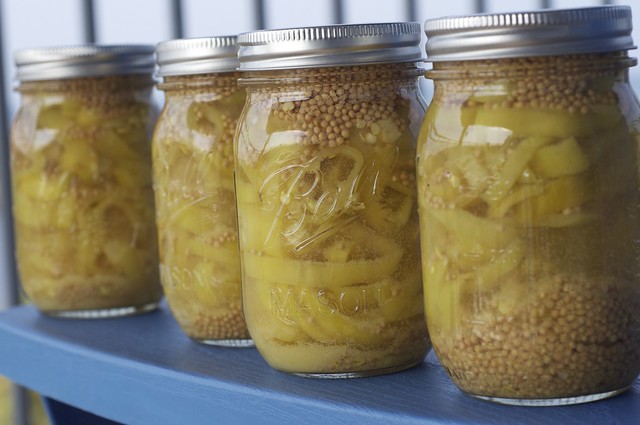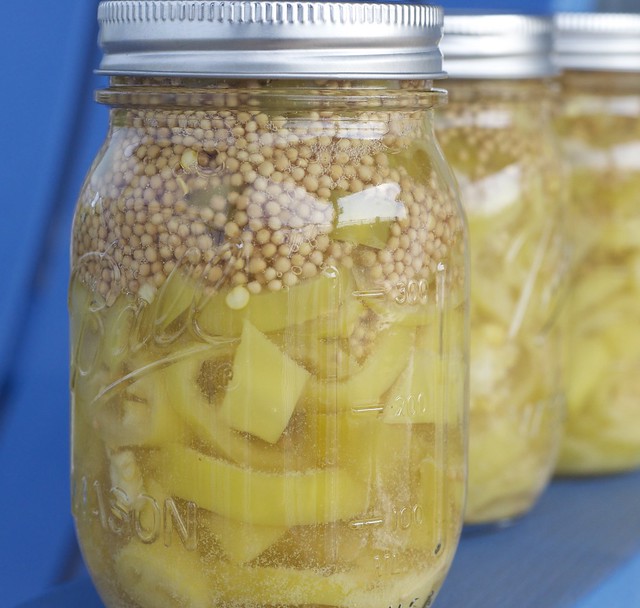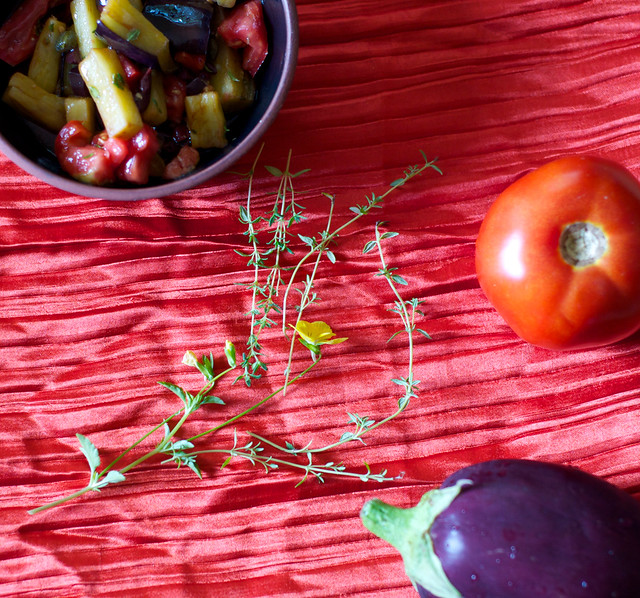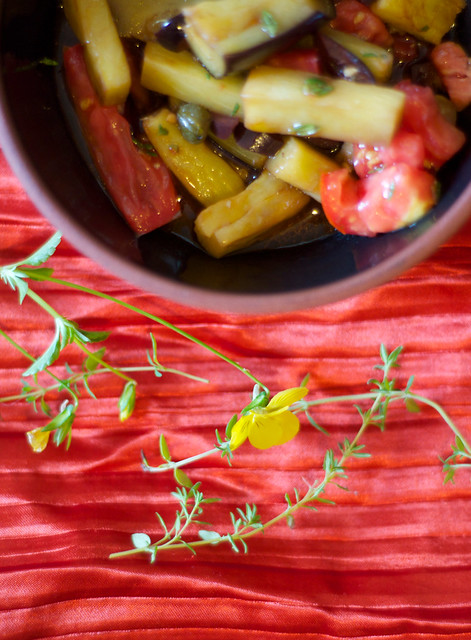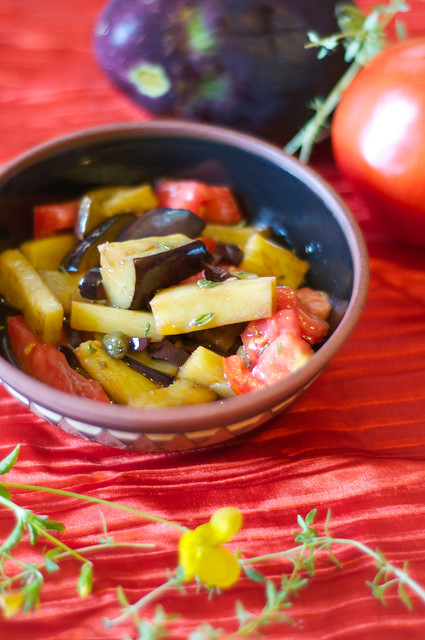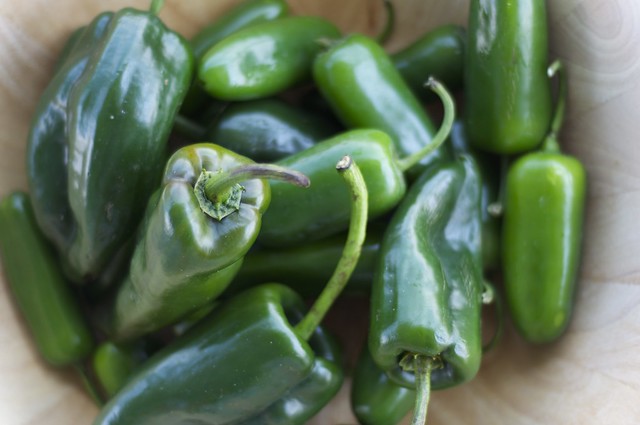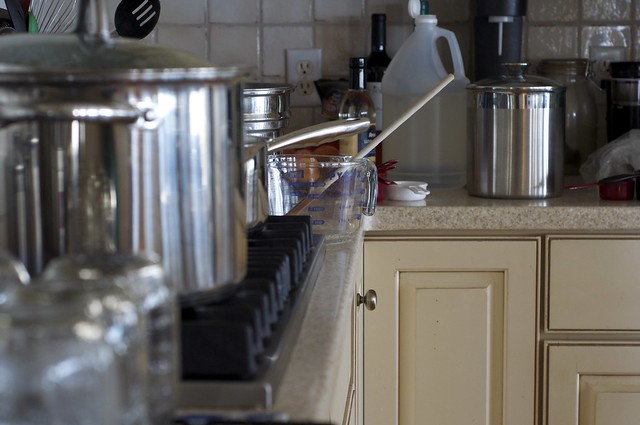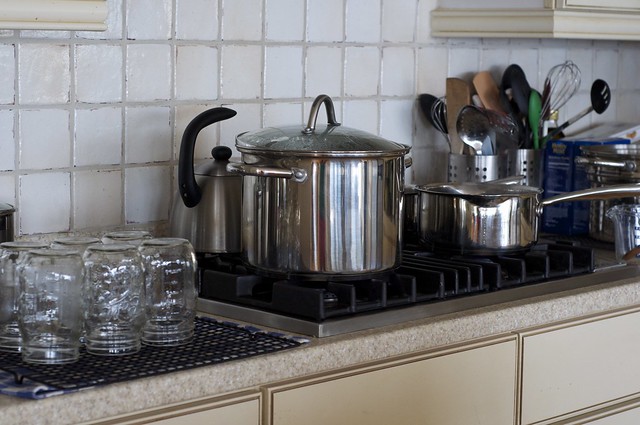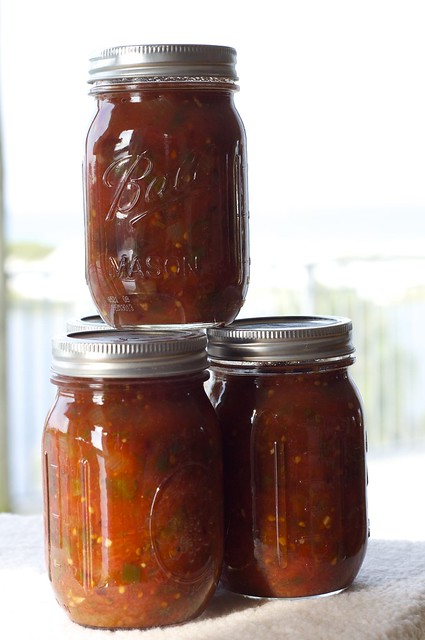
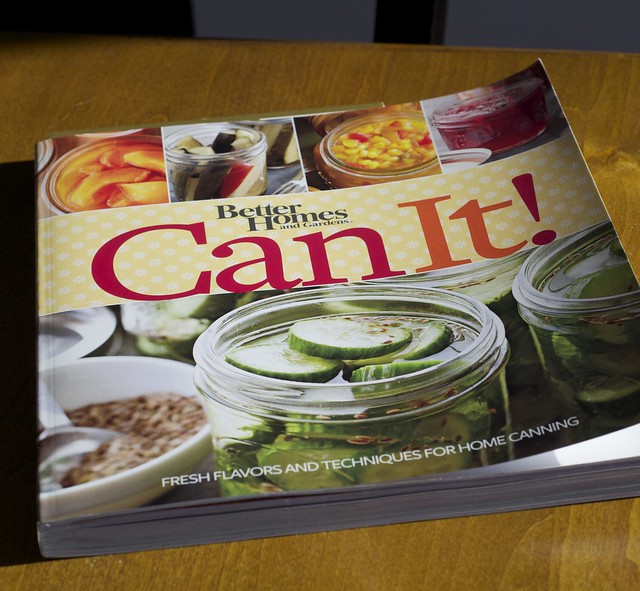

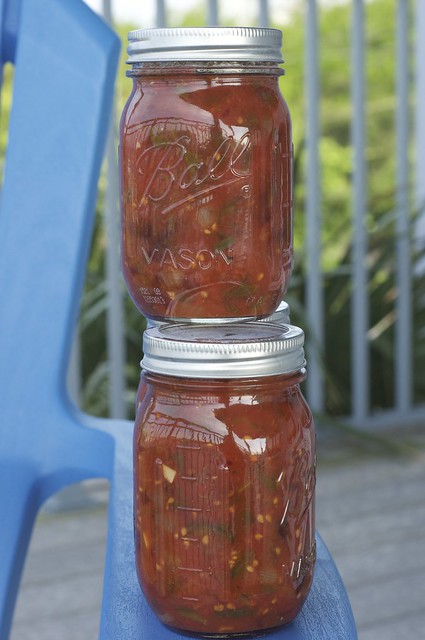
Allow me to share another canning adventure from the
Better Homes and Gardens Can It! book: chunky homemade salsa. In my approach to this recipe, I used chipotle peppers. The result is a slightly smoky medium-hot salsa. The hubs helped me this time, which resulted in us canning a dozen jars in about 3 hours from start to clean-up. We did two recipes: the jars pictured above and more pickles.
I've realized that with canning, the more you do, the better the payoff. Let me put it another way, for all the work that it took to make salsa (and it is a lot), it would have been much better to walk away with three dozen pint size jars, or something like two dozen quarts of salsa. However, most households do not have cooking pots large enough to accommodate this venture. This book's advantage is that it is adapted to the budding canner where most recipes yield a half-dozen jars. A smaller yield is more approachable for a budding canner.
In
two previous posts, I shared
recipes from the book. This time, I'd like to review the expenses and calculate the cost per jar. This book has not disappointed, but perhaps give it a go by purchasing it, borrowing it, or checking it out from the library?
Chipotle salsa
Yield: ~ 7 jars, $6.43 per jar
Costs for canning salsa:
3 kinds of tomatoes were purchased at $2.59-2.99 per lb for a total of $25.33 or 9.4 lb of tomatoes! I chose tomatoes that were firm and ripe from a grocery store. A cost saving strategy could be to purchase tomatoes when they are on sale, or purchase from the farmers' markets. I estimate that 10 lb of tomatoes would cost $25-30 at a market. Most farmers' markets also sell tomatoes by the bushel, or crate, where you can get an even better deal. For time and convenience (aka more expensive), I opted to purchase these from a grocery store.
Tomato variety 1 .........................$9.22
Tomato variety 2 .........................$8.75
Tomato variety 3 .........................$7.36
limes, 2 at................................... $0.86
garlic, 1 head at........................... $0.87
poblanos, 4 at...............................$2.60
cilantro, 1 bunch at.......................$1.19
yellow onions ..............................$1.35
6 oz tomato paste..........................$0.65
1 can chipotle peppers .................$2.69
Ball pint canning jars, 1 dozen at .$9.49
*Salt already in household
*Cumin, 1 small jar........................$2.99 (not included in total cost)
*Vinegar, 1 gallon at .....................$3.15 (not included in total cost)
Total cost......................................$45.03
Cost per jar...................................$6.43 per jar with a total of 7 jars made.
*Vinegar, salt, spices, limes and cilantro, tomato paste, and chipotle peppers may already be in the household staples. I included the cost here because these would need to be repurchased. If you had these and similar items, the adjusted cost would be: $38.61 or $5.51 per jar. The cost of water, energy, or personal time has not been calculated.
Purchasing spices from a South Asian grocery stores can reduce costs. A 1 lb bag of cumin generally costs $2-3 dollars, which is the same cost for a 2.1 oz of spices bought at a grocery store.
The costs may be a deterrent when comparing the cost of one jar of homemade salsa to one jar of commercially prepared store bought salsa. I offer a few arguments in favor of trying to make your own homemade:
The taste of a batch that you make will taste superior to the store bought variety.
You can recruit help and spend some quality time with friends, or family.
You may purchase less salsa throughout the year because you have your batch ready.
You gain useful skills and bragging rights.
You pick up a new and useful hobby.
Canned items are pretty to look.
You have salsa in the middle of winter when tomatoes are not in season.
There isn't a real cost difference between the cost of preparing fresh salsa for a meal, and canning them ahead of time. What I mean by this is that you still spend about the a similar monetary amount, if not, more on making fresh salsa, such as pico de gallo, for one to two meals. Increasing the cost (simply doubling or tripling it) to make a super batch results in more yield for less work overall.
